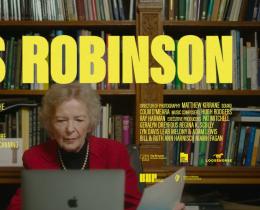Jeremy Rifkin, founder and president of the Foundation on Economic Trends, is one of the world’s leading authorities on economic sustainability. In this thought-provoking five-part series, he explains how we are already transitioning into a post-carbon era and on the verge of creating a sustainable economic paradigm that will usher in the Collaborative Age.
The Third Industrial Revolution will be the last of the great Industrial Revolutions and will lay the foundational infrastructure for an emerging collaborative age. Its completion will signal the end of a two-hundred-year commercial saga characterized by industrious thinking, entrepreneurial markets, and mass labor workforces and the beginning of a new era marked by collaborative behavior, social networks and professional and technical workforces.
In the coming half century, the conventional, centralized business operations of the First and Second Industrial Revolutions will increasingly be subsumed by the distributed business practices of the Third Industrial Revolution; and the traditional, hierarchical organization of economic and political power will give way to lateral power organized nodally across society.
Energy regimes shape the nature of civilizations—how they are organized, how the fruits of commerce and trade are distributed, how political power is exercised, and how social relations are conducted. To understand how the new Third Industrial Revolution infrastructure is likely to dramatically change the distribution of economic power in the 21st century, it is helpful to step back and examine how the fossil fuel-based First and Second Industrial Revolutions reordered power relations over the course of the 19th and 20th centuries.
Distributed Capitalism
Fossil fuels—coal, oil, and natural gas—are elite energies for the simple reason that they are found only in select places. They require a significant military investment to secure their access and continual geopolitical management to assure their availability. They also require top down command and control systems and massive concentrations of capital to move them from underground to the end users. The ability to centralize production and distribution—the essence of modern capitalism— is critical to the effective performance of the system as a whole. The centralized energy infrastructure, in turn, sets the conditions for the rest of the economy, encouraging similar business models across every sector.
Virtually all the other critical industries that emerged from the oil culture—modern finance, telecommunications, automotive, power and utilities, and commercial construction—and that feed off the fossil fuel spigot were similarly predisposed to bigness in order to achieve their own economies of scale. And, like the oil industry, they require huge sums of capital to operate and are organized in a centralized fashion.
Three of the four largest companies in the world today are oil companies—Royal Dutch Shell, Exxon Mobil, and BP. Underneath these giant energy companies are some five hundred global companies representing every sector and industry—with a combined revenue of $22.5 trillion, which is the equivalent of one-third of the world’s $62 trillion GDP—that are inseparably connected to and dependent on fossil fuels for their very survival.




